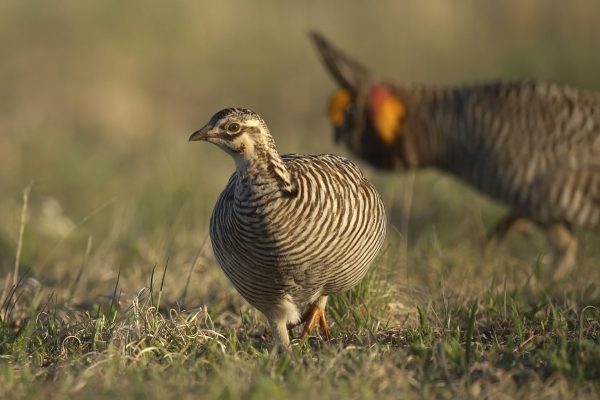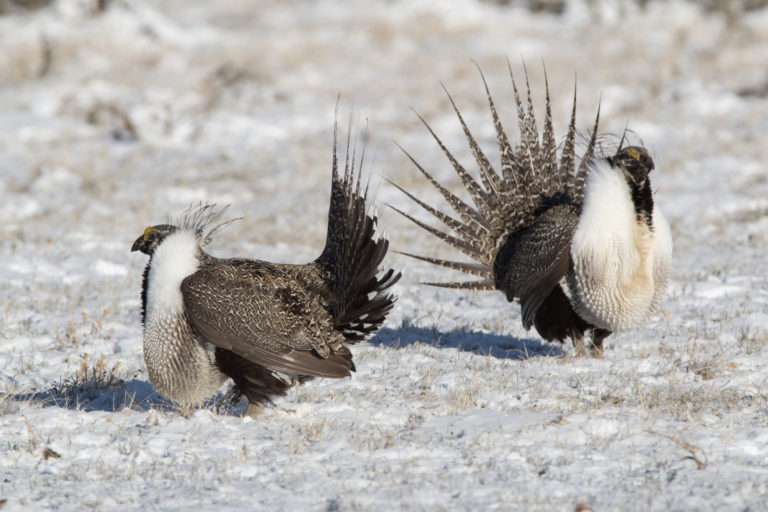Prairie Grouse
Home » Our Services » Bat & Avian Research & Monitoring » Prairie Grouse
WEST employees have unmatched experience addressing the ecological issues surrounding prairie grouse throughout their ranges. Our extensive fieldwork with prairie grouse species includes the use of capture and recapture, distance sampling, aerial survey methods, telemetry data collection, resource selection analysis, and remote sensing. We have completed population assessments and risk analyses, developed mitigation and Habitat Conservation Plans, and conducted innovative research to evaluate and minimize impacts to populations from anthropogenic disturbances.
WEST has published more than 20 peer-reviewed papers on prairie grouse in the scientific literature and has presented at numerous scientific and industry conferences across the US.
Because our employees are experts on state conservation plans, management plans, and the regulations that exist throughout the prairie grouse range, we are able to help clients navigate efficiently through these processes. Highlights of WEST’s current work on prairie grouse species include estimating the range-wide population of lesser prairie-chickens, development of the first-ever greater sage grouse habitat conservation bank, and leading research on estimating impacts to greater sage-grouse, lesser prairie-chickens, and sharp-tailed grouse from wind energy development.
Publications
Behavioral Response of Grouse to Wind Energy Turbines: A Quantitative Review of Survival, Habitat Selection, and Lek Attendance
Chad LeBeau, Shay Howlin, Andrew Tredennick, and Karl Kosciuch
2020
Placement of Wind Energy Infrastructure Matters: A Quantitative Study Evaluating Response of Lesser Prairie-Chicken to a Wind Energy Facility
Chad LeBeau, Mandy Kauffman, Kurt Smith, Jeanette Haddock, A. Tanner, and Karl Kosciuch
2020
An Invertebrate Ecosystem Engineer Under the Umbrella of Sage-Grouse Conservation
Jason D. Carlisle, D. R. Stewart, and A. D. Chalfoun
2020


